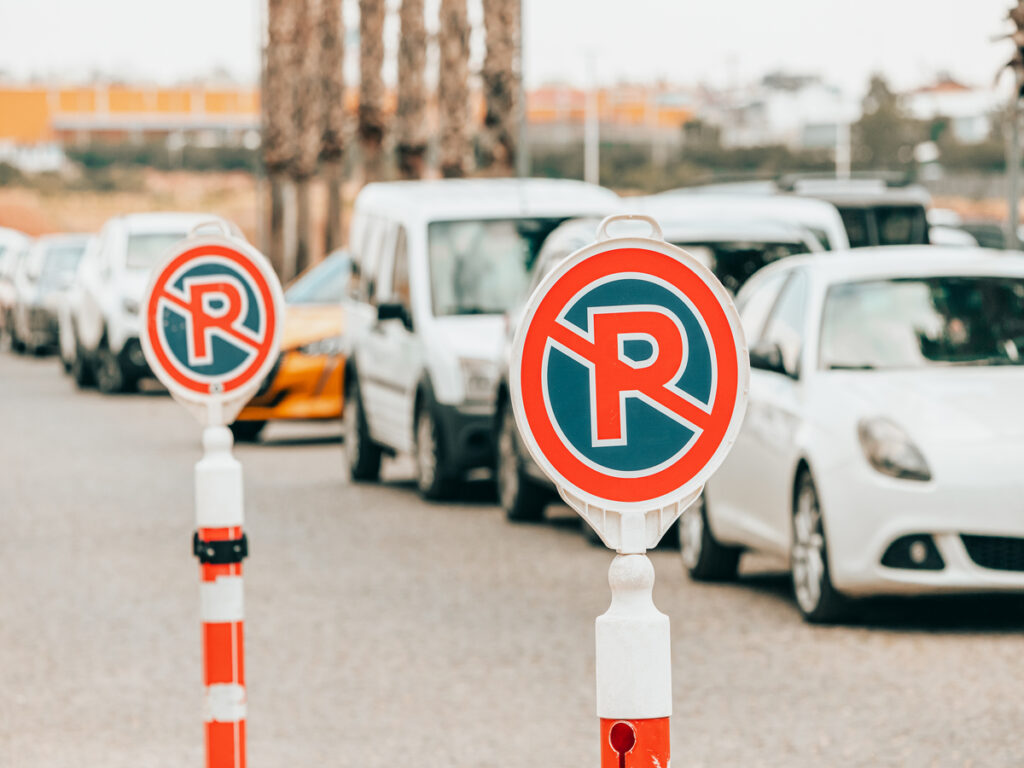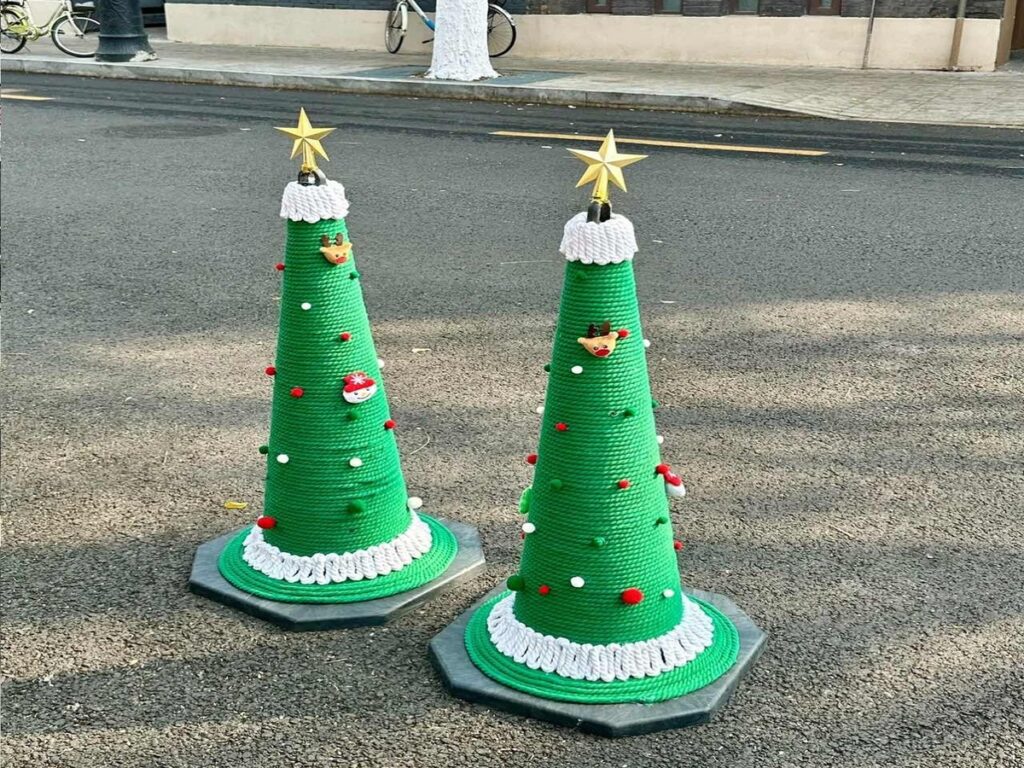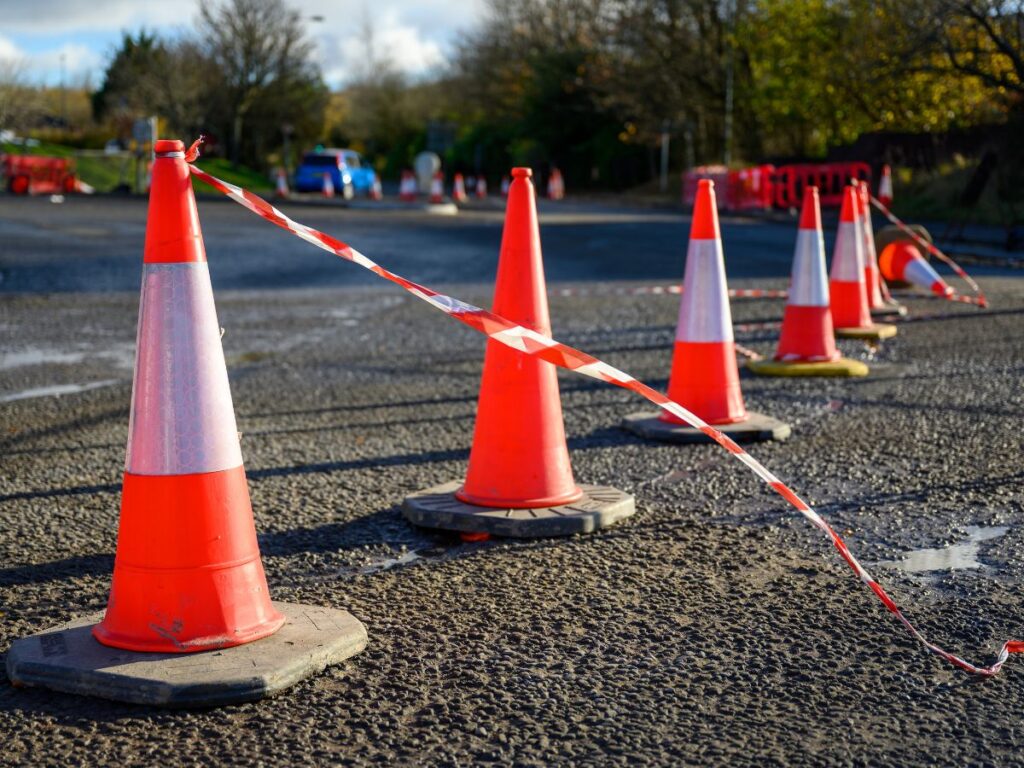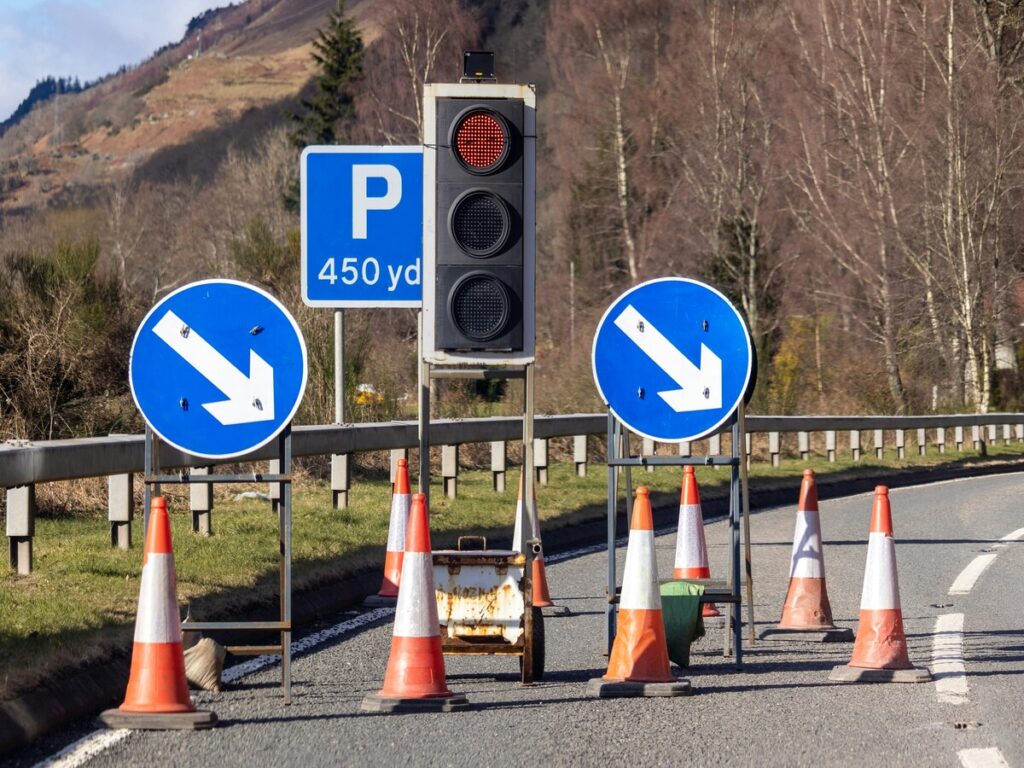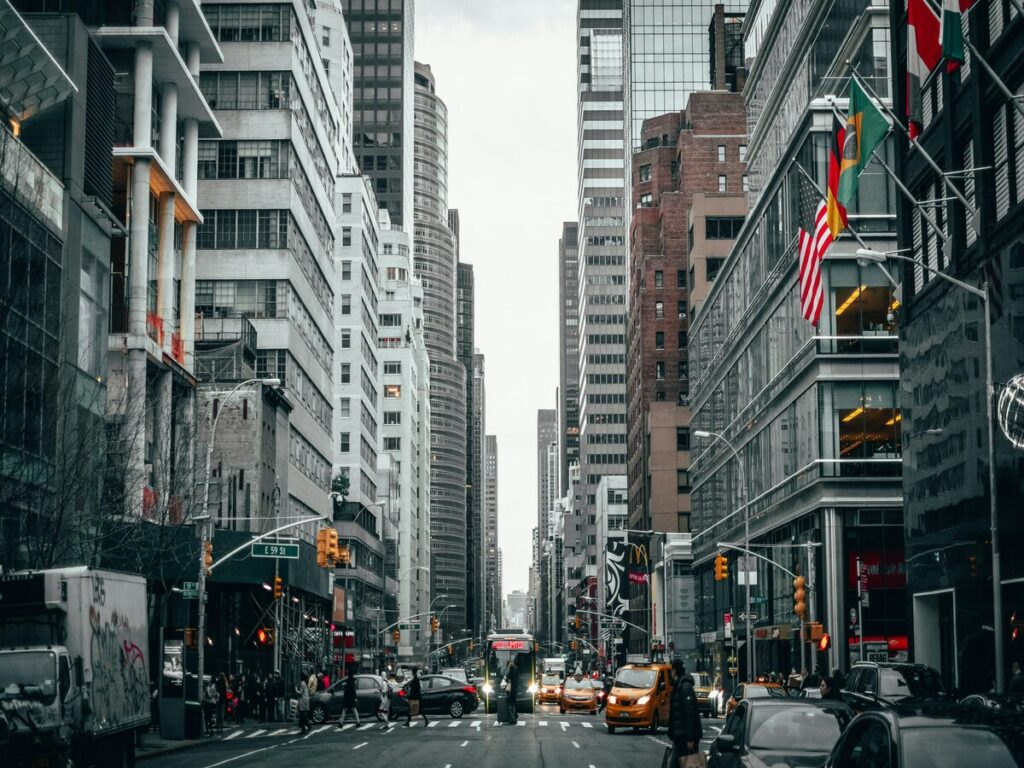
Starting on Enero 8, 2025, a new congestion pricing rule has been implemented in Manhattan, requiring all vehicles entering lower Manhattan to pay a fee. The goal of this new regulation is to reduce traffic congestion, Mejorar la calidad del aire, and raise funds for public transportation and infrastructure improvements in Ciudad de Nueva York. With this change, traffic patterns in Manhattan have been significantly impacted, and drivers are more aware of the additional costs associated with traveling through high-traffic areas. Al mismo tiempo, traffic control tools such as conos de trafico are playing an increasingly important role in managing this new traffic environment and ensuring smooth and safe traffic flow.
What is Congestion Pricing and How Does It Work?
Congestion pricing is a strategy used by cities to reduce traffic congestion, promote the use of public transport, and improve overall air quality. It involves charging vehicles a fee to enter highly congested urban areas during peak hours. In Manhattan, this system applies to vehicles entering the southern part of the island, specifically below 60th Street, during designated times when traffic is at its highest.
The way it works is fairly straightforward: drivers are required to pay a fee electronically as they enter the congestion pricing zone. This can be done using a toll pass such as E-ZPass or through a license plate recognition system that automatically records the vehicle’s entry. The collected fees are used to fund the city’s transportation network, including upgrades to the subway system, bus services, and maintenance of existing roads and bridges.
The Role of Traffic Control Cones in Traffic Management
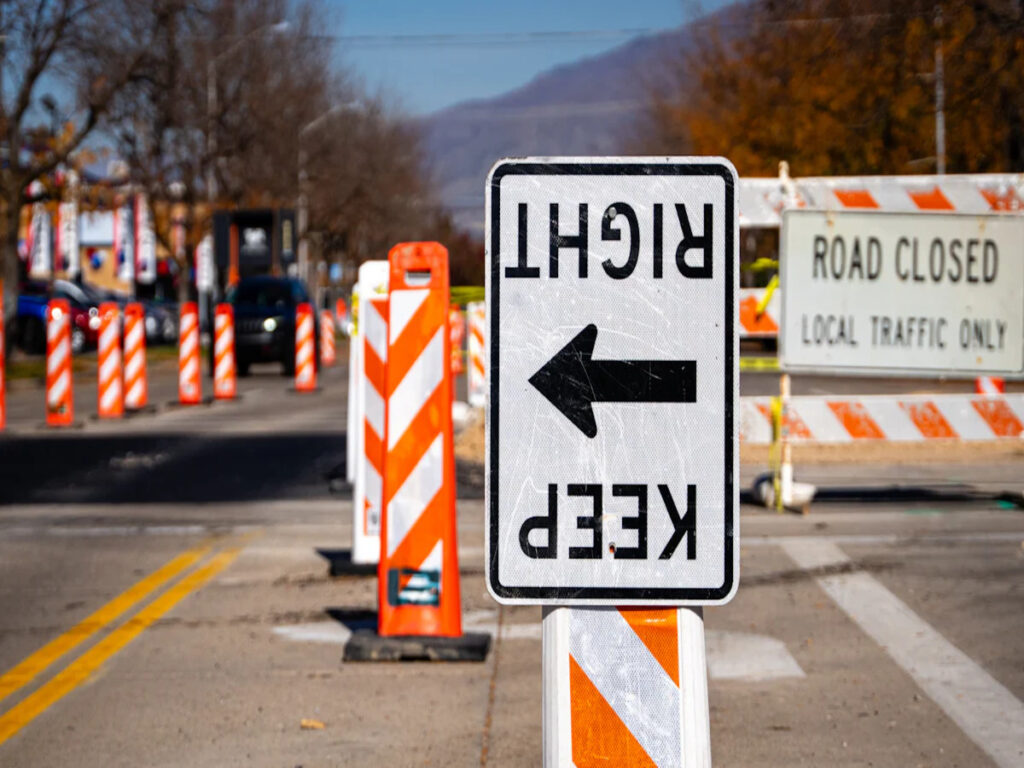
Guiding Vehicles and Preventing Congestion
Creating clear lanes for vehicles at toll plazas.
Traffic control cones play a vital role in creating clear lanes for vehicles at toll plazas. When you approach a toll plaza, traffic control cones guide you into the correct lane, ensuring a smooth and organized flow of traffic. This setup reduces confusion and prevents vehicles from weaving between lanes, which can lead to delays or accidents. Por ejemplo, during a highway construction zone in Manhattan, traffic control cones were used to channel vehicles safely around roadwork, minimizing congestion and improving safety. Marcando claramente los carriles, traffic control cones help you navigate toll areas efficiently, Incluso durante las horas pico.
Separating toll-paying and non-toll-paying traffic effectively.
Cones also help separate toll-paying and non-toll-paying traffic effectively. This separation ensures that vehicles using electronic toll systems, such as E-ZPass, can move through quickly without being delayed by cash-paying drivers. Properly placed traffic control cones create distinct pathways, allowing you to choose the correct lane based on your payment method. In a road maintenance project in Manhattan, traffic control cones were used to establish visible lane closures, which enhanced driver awareness and kept traffic flowing smoothly. This strategic use of cones ensures that toll plazas operate efficiently, reducing wait times for everyone.
Strategic Placement in Manhattan Toll Areas
Placement at toll plazas to streamline vehicle flow.
Strategic placement of traffic safety cones at toll plazas streamlines vehicle flow by guiding drivers into open lanes. When traffic safety cones are arranged in a taper formation, they direct you smoothly into the correct lane, minimizing sudden stops and confusion. Proper spacing between traffic safety cones is crucial in high-traffic areas like Manhattan, where even minor disruptions can cause significant delays. En zonas de trabajo urbano, traffic safety cones have also been used to create dedicated pathways for pedestrians, Garantizar la seguridad tanto para los conductores como para los peatones. This careful placement improves overall traffic management and keeps toll areas running efficiently.
Redirecting traffic during peak hours or construction.
During horas pico or road construction, traffic safety cones are essential for redirecting traffic. They help you navigate detours and temporary lane closures, reduciendo el riesgo de accidentes. Por ejemplo, in Manhattan, traffic safety cones have been used to guide drivers around construction zones, ensuring a steady flow of traffic even during busy times. By clearly marking alternative routes, traffic safety cones prevent sudden lane changes and keep vehicles moving in an orderly manner. This adaptability makes them an indispensable tool for managing traffic in a bustling city like Manhattan.
When it comes to high-quality and reliable traffic control solutions, OPTsigns conos de trafico destacar. Designed for durability and maximum visibility, OPTsigns conos de control de tráfico are crafted to withstand harsh weather conditions and heavy traffic areas. With their bright orange color, collares reflectantes, and sturdy base, they provide clear and effective guidance, ensuring both drivers and workers stay safe.
Enhancing Traffic Safety with Traffic Cones
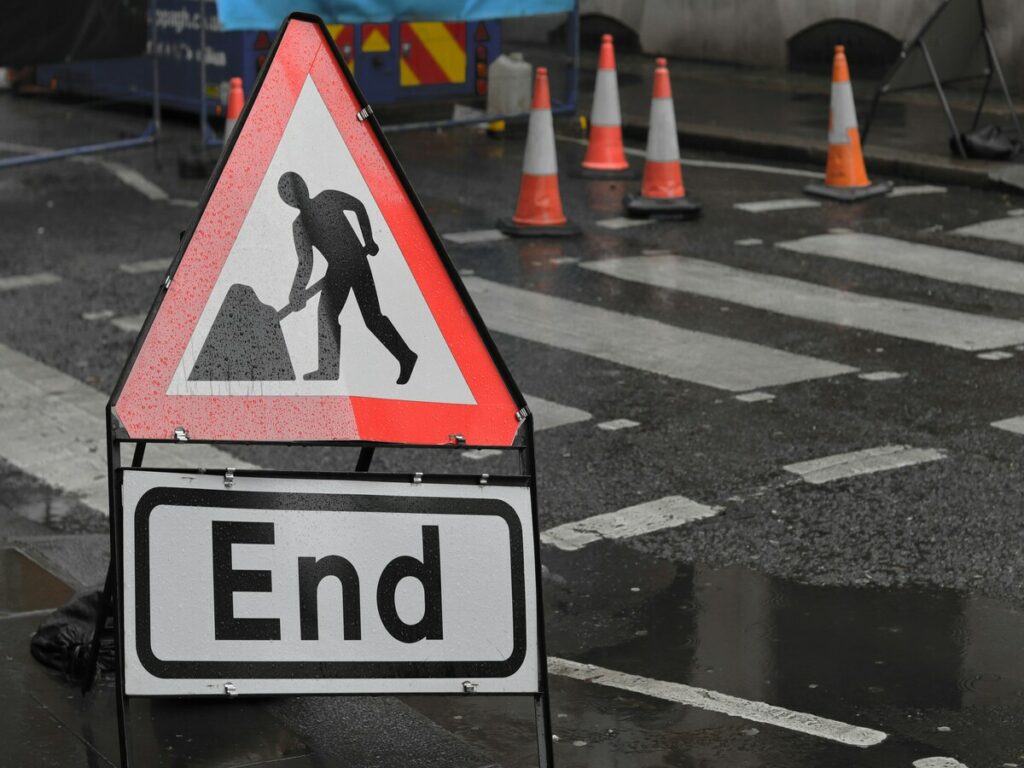
Proteger a trabajadores y conductores
Marking safe zones for toll workers and maintenance crews.
Traffic control cones play a crucial role in protecting toll workers and maintenance crews in high-traffic areas. These road safety cones create a physical and visual barrier that keeps workers safe from oncoming vehicles. When you see road safety cones marking a work zone, they guide you away from the area, ensuring that workers can perform their tasks without unnecessary risks. Proper placement of road safety cones also directs vehicles into appropriate lanes, helping you navigate safely through construction zones. Marcando claramente estas áreas, road safety cones reduce the chances of accidents and improve roadway safety for everyone.
Alerting drivers to potential hazards in toll areas.
Traffic cones serve as an early warning system for drivers. They alert you to potential hazards, such as lane closures or construction work, giving you enough time to adjust your speed and direction. In Manhattan toll zones, road safety cones channel traffic safely through busy areas, preventing confusion and congestion. Sus colores brillantes y sus superficies reflectantes los hacen muy visibles, incluso en condiciones de poca luz. This visibility encourages caution and helps you avoid sudden maneuvers that could lead to accidents. By acting as a warning device, road safety cones enhance traffic safety and protect both drivers and workers.
Reducing Accidents and Ensuring Smooth Traffic Flow
Preventing sudden lane changes and collisions.
Sudden lane changes often lead to collisions, especially in high-congestion areas like Manhattan toll zones. Traffic cones provide clear visual cues that guide you through these areas, reducing the likelihood of abrupt movements. When road safety cones are spaced appropriately, they help you stay in your lane and maintain a steady flow of traffic. En zonas de baja velocidad, El espacio más cercano garantiza una mejor orientación, which is essential for preventing accidents. By keeping vehicles organized, road safety cones contribute to safer roadways and smoother traffic flow.
Maintaining order in high-traffic zones.
In bustling areas like Manhattan, maintaining order is critical for roadway safety. Traffic cones delineate work zones and separate them from active lanes, ensuring that vehicles and pedestrians move in an orderly manner. When you encounter road safety cones in a toll area, they help you navigate efficiently, Incluso durante las horas pico. This organization minimizes delays and keeps traffic moving steadily. By reducing confusion and marking clear pathways, road safety cones play an indispensable role in traffic safety and management.
Supporting the Resumption of Manhattan Tolls
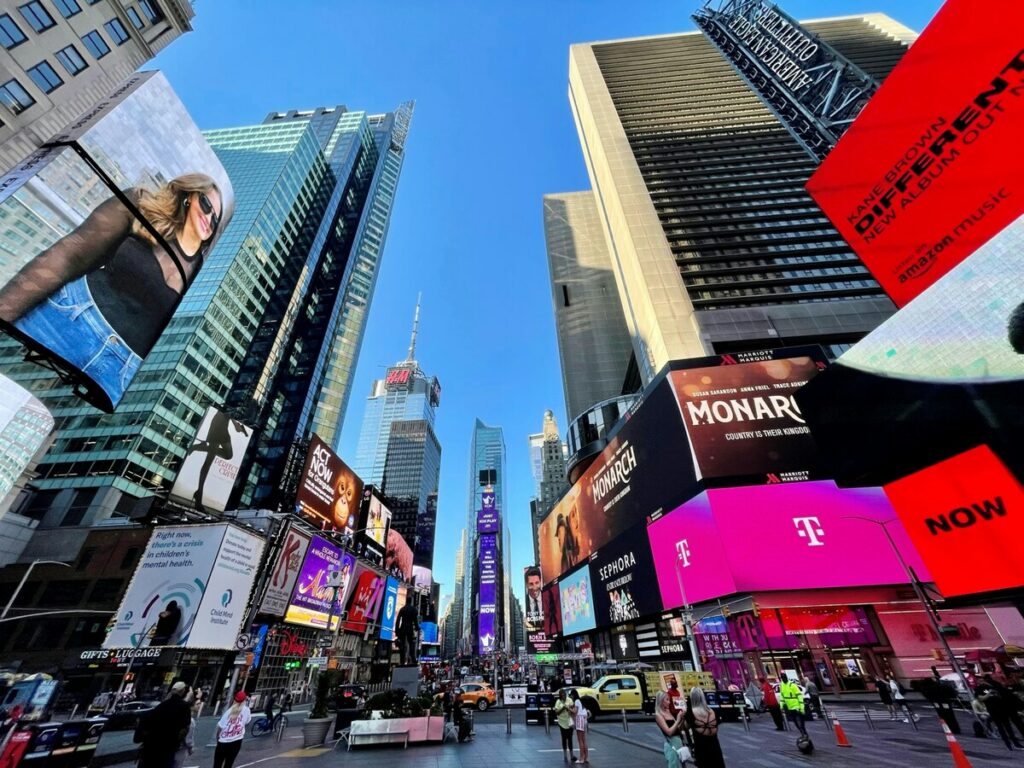
Temporary Markers for New Toll Setups
Marking new toll lanes and payment zones.
Traffic control cones play a vital role in marking new toll lanes and payment zones. As Manhattan tolls resume, you may notice updated lane configurations designed to improve traffic flow and reduce congestion. Cones act as temporary markers, guiding you through these changes with ease. Sus colores brillantes y superficies reflectantes garantizan la visibilidad., incluso en condiciones de poca luz. By strategically placing traffic cones on road, authorities can create clear pathways for vehicles, helping you navigate the toll areas without confusion. This approach not only enhances safety but also ensures that toll plazas operate efficiently during the transition.
Helping drivers adjust to updated toll systems.
Adjusting to updated toll systems can be challenging, especially in a bustling city like Manhattan. Traffic control cones simplify this process by providing clear visual cues. Por ejemplo, traffic cones on road can separate lanes for electronic toll payments, such as E-ZPass, from cash payment lanes. Proper spacing and alignment of cones ensure smooth navigation, reducing the likelihood of sudden lane changes. Regular maintenance of cones, including cleaning and inspection, keeps them effective and visible. By following safety guidelines, such as those set by Muescato y OSHA, traffic cones on road help you adapt to new toll setups while maintaining safety and order.
Adapting to Changing Traffic Patterns
Reconfiguring traffic flow during emergencies or special events.
Emergencies and special events often disrupt normal traffic patterns. Traffic cones offer a flexible solution for reconfiguring traffic flow in these situations. Smart traffic cones equipped with sensors can monitor road conditions and communicate with traffic management systems. These cones for traffic control detect changes in the environment and alert authorities, enabling quick adjustments. Por ejemplo, during an accident, cones for traffic control can activate warning lights and guide vehicles to safe zones. Reflective cones improve visibility in low-light conditions, garantizando que puedas navegar con seguridad. This adaptability makes cones for traffic control indispensable for managing traffic during unexpected events.
Managing detours and temporary closures effectively.
Detours and temporary closures are common in Manhattan, especially during road construction or infrastructure upgrades. Traffic cones help manage these situations by clearly marking alternative routes. When you encounter traffic cones, they guide you around restricted areas, minimizing confusion and delays. En sitios de accidentes, cones for traffic control create a safe perimeter, protecting responders and drivers. Deploying at least 16 cones ensures effective traffic guidance in emergency scenarios. By organizing traffic and marking detours, cones for traffic control maintain order and keep vehicles moving smoothly, incluso en condiciones difíciles.
The Environmental and Technological Benefits of Traffic Cones
Sustainable and Recyclable Materials
How traffic cones align with New York’s low-carbon goals.
Traffic cones contribute to New York’s low-carbon goals by incorporating sustainable materials and eco-friendly manufacturing practices. Conos tradicionales, often made from PVC, pose environmental challenges due to the toxic contaminants released during production. Sin embargo, manufacturers now use recyclable materials like high-strength polypropylene, which reduces waste and supports renewable energy use. Adoptando estas prácticas, traffic cone production aligns with the city’s efforts to lower carbon emissions and promote sustainable infrastructure projects.
The role of recyclable materials in traffic safety equipment.
Recyclable materials in traffic cones play a significant role in environmental sustainability. Así es como hacen la diferencia:
- Green traffic cones made from recycled materials reduce landfill waste.
- Reusing old cones supports a circular economy, conserving resources.
- Producing cones from recycled PVC requires less energy, lowering carbon emissions.
- Renewable energy sources, such as solar and wind, power production facilities.
- Energy-efficient machinery minimizes waste during manufacturing.
These innovations ensure that traffic cones remain eco-friendly while maintaining their essential role in traffic safety and infrastructure projects.
Integration with Smart Traffic Systems
Using traffic cones in conjunction with intelligent traffic control systems.
Smart traffic cones enhance urban traffic management by integrating with intelligent systems. These cones provide real-time updates to drivers, helping them navigate road conditions safely. Por ejemplo:
- They alert drivers to slowdowns or stopped traffic ahead, Reducir los riesgos de colisión.
- Sistemas de advertencia automatizados notify drivers of potential hazards, ensuring safer decisions.
- Smart cones transmit data to traffic management systems, enabling dynamic adjustments to signals and routes.
This technology improves traffic flow and enhances safety during emergencies or infrastructure projects.
Enhancing urban traffic management with innovative tools.
Technological advancements in traffic cones make them indispensable for modern urban environments like Manhattan. Features include:
- Solar-powered LED lights for better visibility in low-light conditions.
- Sensors that monitor traffic flow and communicate with management systems.
- Conectividad IoT, which integrates cones with smart city systems for real-time data sharing.
- Support for autonomous vehicles by providing navigation data in complex areas.
These tools optimize traffic flow, reducir retrasos, and ensure safety during infrastructure projects, making them a vital part of Manhattan’s evolving traffic systems.
Traffic control cones are essential for managing Manhattan’s evolving traffic systems. They guide vehicles through toll areas, ensuring smooth traffic flow and reducing congestion. Their role in traffic safety is unmatched, as they protect workers, alert drivers to hazards, y prevenir accidentes. Smart technology enhances their functionality, offering real-time updates and improving visibility. These cones for traffic control also support sustainability goals with recyclable materials. As Manhattan tolls resume, their adaptability ensures efficient traffic management, making them indispensable for modern urban environments. You can rely on these tools to maintain safety and order on busy city roads.

